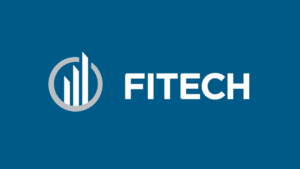Many residential management companies already have data in their systems that can give them a competitive advantage when it comes to leasing —if they have the right tech tools to pull and apply that data. The key is knowing what information to use and to track, and how to access external resources to use this data to your organization’s advantage. This starts with the internet listing service (ILS).
Integrating your accounting and lease management systems with the ILS gives property managers and real estate organizations a clear leg up—but it’s knowing how to use the data provided, using an enterprise resource planning (ERP) solution, that helps turn more prospects into tenants.
Let’s take a quick look at how the typical ILS guest card process works, and then see how planning tools can streamline the process.
ILS at a glance: The ILS allows organizations to capture data from the prospect through guest to tenant stages. Property managers can create prospect histories without the burden of manual data entry throughout the process. Leasing agents and property managers can pull reports and view information in a few easy clicks. A properly integrated ILS tool can pull unit availability from your ERP and update the listings real time when market/asking rents are adjusted by your leasing department.
The ILS card: An individual visits a rental website connected to the ILS; he fills out the basic contact information and a guest card is created for the “prospect.” Once the rental agent reaches out and schedules a showing, the prospect is switched in the company’s accounting system to “guest.”
More information is entered into the system such as apartments that you are showing them, whether or not you’ve collected an application fee, and information for a background check. At this point, if the deal dies, the information remains in the system, and can be used for future traffic reporting. If the deal goes through, the guest card status becomes “tenant.”
All that information that was initially gathered is now populated in your system and can be easily moved on to the lease and rent collection can begin.
How Integration Streamlines the Process—and Gives You the Competitive Edge
The automation and integration of enterprise resource planning solutions (ERPs) with guest card management tools can move along this process, streamline the leasing paperwork and provides business intelligence your marketers need. An integrated system allows property managers to import and export a variety of guest updates and events and display helpful information for prospects during their decision process.
- After the ILS guest card is generated, your organization can then run a unit availability report on a portfolio basis; this report shows your leasing agents which units are vacant and rental-ready, where they are (floor and unit number) and the asking rents.
a. On the asset management side, your team can log into the system and update the property data regarding exactly what is available and for how much on any given day. You can upload amenity information and floor plans as sales tools.
b. The ILS automatically integrates all leads for you.
c. On the prospect side, the data gets pushed to the card and your online visitors can see it on your internet listings. - The internet is dynamic—the leasing team can change asking rents based on current market trends in your area. This data is integrated with your accounting system and provides valuable information when it’s time to ask for rental adjustments.
- The prospect has selected a unit and is ready to sign the lease. The technology provides a streamlined and completely paperless operation through the ILS guest card:
a. The tenant can pay the application fee online and an email is generated with the approval and a copy of the lease.
b. The ERP tool enables tenants to sign leases virtually (digi-sign) through the guest card.
c. All the digital paperwork goes back to the leasing agent who provides the move-in information and removes the apartment from the unit availability list.
d. The ILS guest card is updated and the unit is no longer visible to any other prospect.
Aside from these ERP solutions, there are other ways you can create a tighter lead generation system through technology.
- Business intelligence — Access valuable data from industry-leading leasing/renting software solutions and download this information into a customized business intelligence tool.
- Your leasing team can collect valuable rental rate data within geo-targeted areas—a specific radius around your properties or within specific neighborhoods. This enables them to do competitive analyses of your rents vs. market rates that are most relevant to your properties.
- Website integration — Add a “Contact” button on your organization’s website that directs visitors to a prospect-specific landing page. This page—basically a popup guest card—captures your leads’ contact information directly from your website. By integrating this information with an enterprise solution, your IT provider can develop a database based on your website traffic demographics; use this data to inform your sales and marketing efforts, including your rental rates.
- Your team can see who is visiting your site and what they are looking at. By measuring your conversion rates from guests to tenants, and through competitive analysis of rents in your area, your leasing agents can better determine why prospects have declined or accepted a rental unit. For instance, are the market rents too high and causing guests to not proceed to tenant?
- This historical data can also be used to inform future leasing activity and rate structures.
By connecting your property management system to the internet listing service (ILS), and understanding which reports will provide the proper information, you can not only generate more ILS guest cards . . . you’ll be able to move potential tenants to becoming renters more easily, with less steps, less paper, and more productivity.

